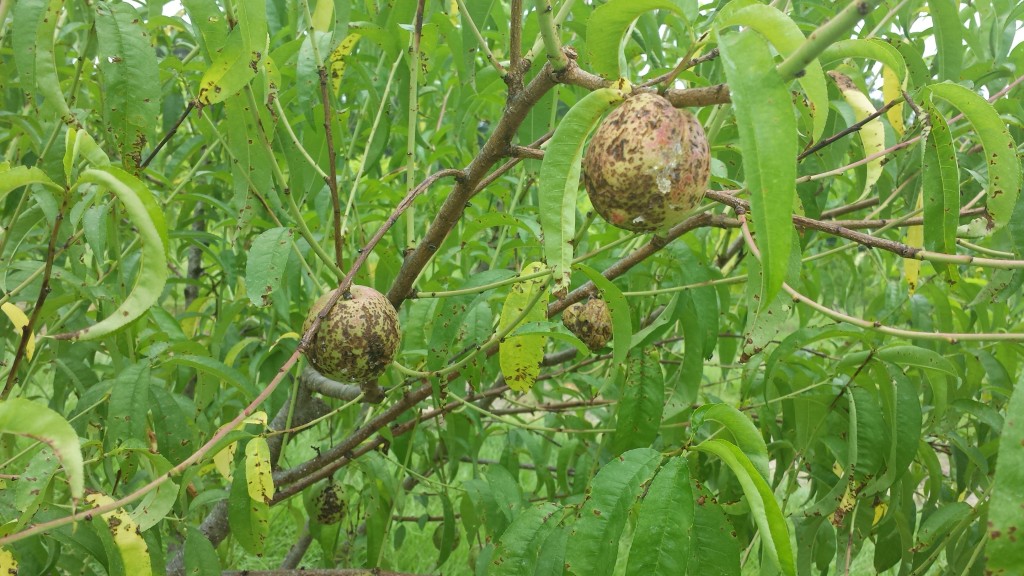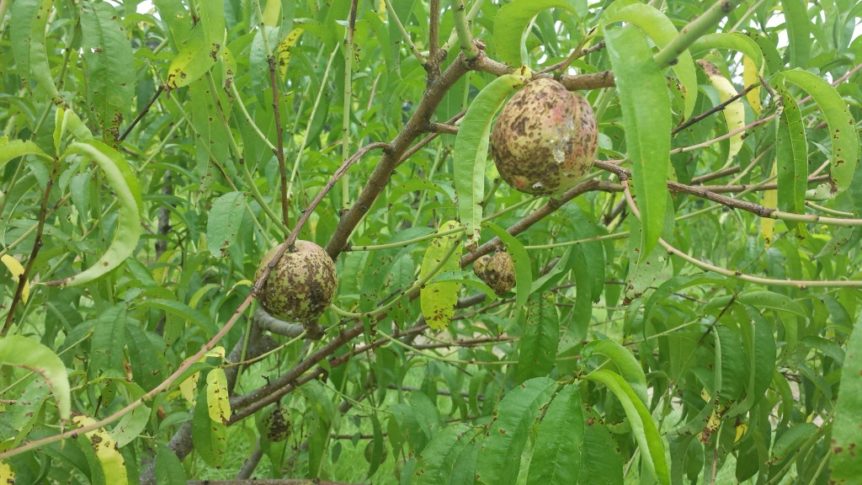By Clint Thompson
Increased rainfall in recent weeks has made the peach crop across the Southeast susceptible to disease buildup.

According to Phil Brannen, University of Georgia Cooperative Extension fruit disease specialist, it has been one disease that is of most concern.
“Generally, the crop is excellent. We’ve got a big crop. Hopefully, we can carry a high percentage of that crop,” Brannen said. “The only negative that I am aware of is bacterial spot starting to show up on some of the more susceptible varieties and even on some of the moderately, susceptible varieties. That makes sense that we’ll see that just based on the rainfall pattern that we’ve had.
“The growers are just going to have to make sure they’re using a lot more copper and also the antibiotics that are going to control that disease, especially if the rain continues. Hopefully, it’ll dry off a little bit as we get into the other varieties where we won’t have that problem.”
Bacterial Spot Impact
Bacterial spot is a sporadic leaf-spot disease that can cause defoliation in certain cultivars. Spots can also appear on the fruit, causing damage and leaving fruit unmarketable.
“It needs rain to infect, and when you have moist conditions, especially long-standing moisture where it doesn’t dry off the fruit itself, you’ll get infection. The primary time for infection is right after bloom,” Brannen said. “About three to four weeks after bloom is where we think we get most of our infection, but when it’s raining as much as it is now, we can get later infections, and that’s what we’re seeing some of now.”
As excessive rainfall continues to drench the region, more disease buildup is likely, especially as temperatures continue to rise into the summer.
“I expect that as we get a little bit hotter and things heat up that we’ll see some more disease. Thankfully, our spray program has been holding pretty well for the last few years, and I hope it will continue to do so,” Brannen said.










